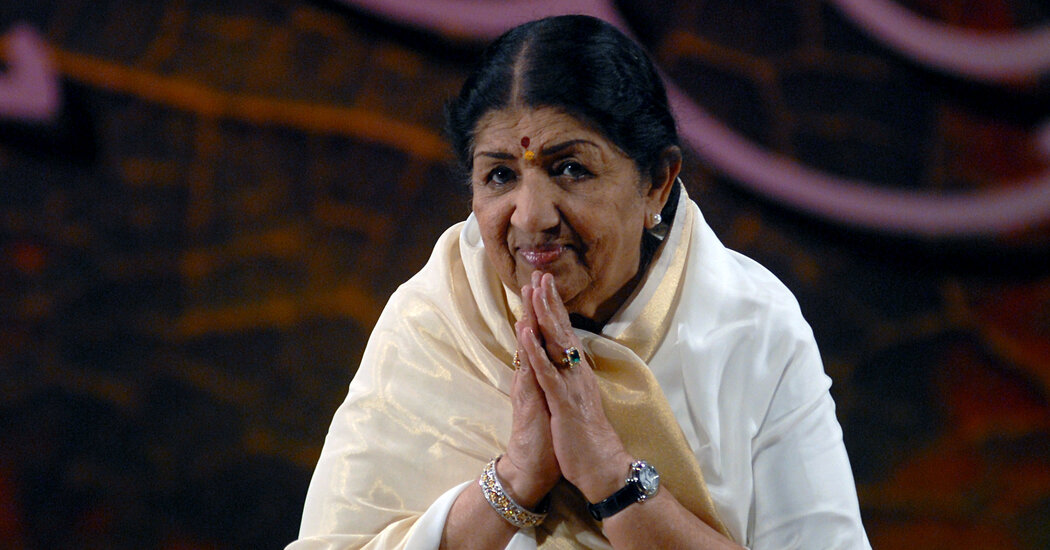Ms. Mangeshkar, a revered figure in India, recorded songs for countless films — not appearing onscreen herself, but providing characters’ singing voices.
Lata Mangeshkar, a beloved Indian singer who enthralled generations of Bollywood audiences as the singing voice behind many actresses’ performances, died on Sunday at Breach Candy Hospital in Mumbai, India. She was 92.
She died of complications from Covid-19 after weeks of hospitalization, said Pratit Samdani, a doctor at the hospital, according to Indian news outlets. India’s prime minister, Narendra Modi, said on Twitter that he was “anguished beyond words.”
Ms. Mangeshkar leaves a legacy of tens of thousands of songs, mostly in Hindi but also in several other Indian languages. She was what is known as a playback singer — not appearing onscreen herself, but contributing a character’s voice to be dubbed in for song-and-dance scenes.
But in India, she was far from anonymous. Her decades of work made her a revered figure. She received the Bharat Ratna, India’s highest honor, in 2001.
Ms. Mangeshkar was known for her range — she could sing in four octaves — and her gift for singing in character, tailoring her voice and emotions for the actress she was voicing onscreen. She sang some of Bollywood’s biggest hits, including “Pyaar Kiya to Darna Kya,” from the 1960 film “Mughal e-Azam.” The film star Dilip Kumar once called her voice “a miracle of nature’s creativity.”
“She leaves a void in our nation that cannot be filled,” Mr. Modi said on Twitter.
Early in her career, in the 1940s, Ms. Mangeshkar played minor roles onscreen. “I never liked it — the makeup, the lights,” she said in an interview for a book published in 2009. “People ordering you about, say this dialogue, say that dialogue. I felt so uncomfortable.
“The day I started working as a playback singer, I prayed to God: ‘No more acting in films,’” she said. “He listened to me and I got a fairly good position in playback singing.”
A full version of this obituary will be published later.
Mujib Mashal contributed reporting.


























